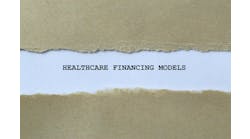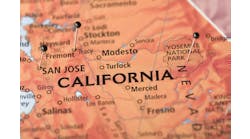The OpenNotes movement, in which physicians and patient care organizations are sharing physician notes with patients following their doctor visits, is gaining steam all across the U.S. healthcare system. Already now, the OpenNotes team estimates, 10 million patients have access to their physicians’ notes online. OpenNotes—and its potential to change the physician-patient relationship, and ultimately contribute to the transformation of healthcare delivery in the U.S., to make it more responsive and to better engage patients in their care—was the subject of the July/August Healthcare Informatics cover story.
Naturally, every movement needs an early, visionary leader, and the OpenNotes movement has been no exception—it’s got Tom Delbanco, M.D. Delbanco is a professor of general medicine and primary care at Harvard Medical School, and practiced as an internal medicine physician for 40 years in the Division of General Medicine and Primary Care at Beth Israel Deaconess Medical Center in Boston. Several years ago, he joined together with Jan Walker, R.N. to initiate a movement that is now sweeping the country, changing healthcare, and creating numerous implications for healthcare IT leaders in its wake.
Dr. Delbanco was one of a number of physician leaders and others to interviewed for the July/August HCI cover story. He spoke this summer with Editor-in-Chief Mark Hagland. Below are excerpts from that interview.
To begin with, it is interesting that OpenNotes has a very light “footprint,” correct? You have very little heavy organizational structure or formality of any kind.
Yes, that’s correct. OpenNotes really is a movement; it’s not a piece of software or a hierarchical organization. The only thing that is ours is our logo, our name and our intellectual property on our website—our toolkits, our videos, our research—all of which we charge nothing for. We have no revenue stream other than philanthropy. And we have an agreement now with CHIME and AMDIS [the Ann Arbor, Mich.-based College of Healthcare Information Management executives, and the Association of Medical Directors of Information Systems].
So tell me about what made you decide to start OpenNotes.
I can see things over a long period of time. And there’s no question that when I went to medical school—and I had a good Jewish mother—that my mother thought I would be a god, and would tell people what to do. I don’t think the modern doctor thinks in quite those terms, though perhaps some do more so than people would admit. But here is the epiphany I had, as a general internist, who had started the division of primary care at Beth Israel [Medical Center].
It was in the 1970s, and I had a new patient whose complaint was high blood pressure. He was a young man, and I learned that his marriage wasn’t going well, that he was in some trouble at work—he was a printer by trade—and that he smoked. We had started to create problem lists in the medical record, which was still paper-based back then. And I was writing notes, but I said to myself, this guy is a printer, he can probably read upside-down what I’m writing about him right now. So I said to him, ‘Mr. A., you know, I’m stuck, because I think you can see what I’m writing, right?’ And he said ‘Yes.’ And I said, ‘So the problem is that your case is a classic one of early alcohol abuse, but I don’t want to write that down if it’s not true.’ And he paused, and then said, ‘Well, you’d better right it down.’
At around the same time, there was an article in The New England Journal of Medicine saying, why shouldn’t patients see their medical records? So I began giving patients copies of medical records I wrote. And then the electronic medical record came along, and Beth Israel was one of the first to have an EMR, and one of the first to have a patient web portal, now called PatientSite. And so we got used to the notion that patients could look at their problem lists and medication lists and message their doctors. But the one thing they couldn’t do was look at our notes.
And then in 1996, HIPAA [the Health Insurance Portability and Accountability Act] came along and gave patients the right to read anything in their record. But we as doctors made it as difficult as possible, charging 75 cents a page or requiring that a nurse be present, or stalling. So all we’ve really done with OpenNotes has been to give patients access to something that they have a right to do anyway. It’s about transparency; it’s part of the inexorable motion of transparency as it [transparency] takes over the world.
From what I’ve heard from physician and medical informaticist leaders, the main challenge in moving organizations, and practicing physicians, towards OpenNotes, is cultural, not technological, correct?
Yes, that’s right. We learned a lot from our first study, published in the Annals of Internal Medicine in 2012. First, as doctors shifted to OpenNotes, they found that they had no need to be afraid of the change. To this date, we [at OpenNotes] know of only four doctors nationwide who opened their notes and have since closed them. Importantly, 70 percent of patients have said they’ve felt more in control of their care. What’s more, I think that OpenNotes fosters control both for patients and for those caring for them. And one of the biggest conundrums in medicine is how you get patients to be compliant. And when 70 percent of patients said they were taking their medicines better because of this, that was a mind-blowing stat, and an enormous contribution that we were able to document. That was very exciting!
So there are multiple dimensions of benefits, then, right?
Yes. One of the biggest concerns now is the issue of value, which is a combination of cost and quality of care. We believe that this [the advance of the OpenNotes movement] will enhance value; and it will enhance patient safety as well, and that’s very important. Sigall Bell, who does most of our research into patient safety, points out that a doctor writes and reads thousands of notes, but a patient reads only his own. Having the patient’s eyes on one record can help catch errors, ensure the record is accurate, and help make care safer.
The key has been to get the doctors not to freak out ahead of time, right?
Yes, that’s right. So then, what do you need to make this happen? You need a physician champion. You need education. In that regard, our toolkits have been downloaded thousands of times, and people have said they were very helpful. And when Kaiser Northwest adopted OpenNotes, they had an interesting business rationale. They said, number one, we can manage the health of our patients belter if they use our portal; number two, once patients are on one patient portal, they don’t want to switch and are more likely to remain in our system; and number three, one of the best ways to encourage them to register for our portal is to offer them OpenNotes.
How fast will this movement accelerate?
We have generous funding from four large philanthropies, which we received nine months ago now. We obtained three years of funding, and our goal was to go from 20,000 patients in our original study to 50 million Americans with ready electronic access to their doctors’ notes. We published our paper in October 2012, and almost four years later, more than eight million people have such access now. I don’t know if we’ll make 50 million, but our basic goal is to make this the standard of care. That’s our real goal.
As more and more communities go to this, it becomes the norm, right? Doctors all talk to each other, and adoption will lead to more acceptance.
So, Diane Rehm interviewed me on her show. She wanted to find a doctor to debate me, but she couldn’t find a doctor who would come out publicly and oppose this idea. On the other hand, when you do anonymous polls, a hell of a lot of them [practicing physicians] say they don’t like this a bit. I have theories about that. One of the interesting questions is why is there so little perturbation of the doctor as a result of OpenNotes. We spent untold hours preparing our three sites for the ‘deluge’—and nothing happened.
We think that there are several reasons that patients don’t bother their doctors once their notes are opened to them. One is that for every patient who bugs the doctor more, there’s another patient who bugs the doctor less; that’s a tradeoff. Number two is that patients are far more resourceful than we give them credit for. If I write a technical term, they look it up. The third thing is, if it’s a very small notation error, like it was an aunt instead of an uncle who had cancer, they don’t bother us. Fourth, it’s still hard to find the notes in many of the portals. The fifth reason, which I don’t like, is that patients are still scared stiff of doctors. Even for me, my pulse goes up when I see the doctor. And one of the things we’re studying now is anonymous reporting of patient safety aspects. We’re looking at Beth Israel and Children’s Hospital of Boston and Carolinas Health System.
Meanwhile, there are perhaps four principal reasons that doctors don’t like the idea of OpenNotes, two of which are explicit. One is that they are understandably terrified of what it will do to their workflow, which is a legitimate fear. But in fact, post-go-live, we find very little change to doctors’ workflow. The second is that they say we’re going to scare the hell out of our patients. But that rarely happens. And the third thing is, because of RVUs and the persistent primarily fee for service payment system, doctors don’t always record what’s actually right. So you read a note saying, I spent 40 minutes with Mark, we went through ten issues. And you, Mark, might say to yourself, wait a minute, he spent four minutes with me and never touched me. So OpenNotes will breed honest transparency. And finally, some doctors are literally embarrassed by the notes they write. Some don’t write very well. For some, English is their second language.
How do you feel about the phenomenon at this point in its evolution? You’re its father.
I’m excited about understanding how OpenNotes will affect patients, families, care partners, clinicians and medical systems. I’m also excited about an extension of OpenNotes called OurNotes, in which patients will co-generate notes with us. We believe that will lead to better shared decision-making and shared care planning.
We’re learning that OpenNotes can build trust between patients and clinicians, and it’s exciting to think about what else we’ll learn about the power of note sharing in all areas of health care, including behavioral health.
That’s a frontier.
Yes, it’s a real frontier, and it’s spreading. The University of Washington, Virginia Mason, Beth Israel, and the U.S. Department of Veterans Affairs, are all working hard on opening mental health notes. I also think for substance abuse, that it has enormous implications. Our pain unit is doing some exciting work with note sharing. That’s another frontier. There are many others. It’s a terrific area for inquiry, and we are thrilled about the growing interest nationally and internationally.


